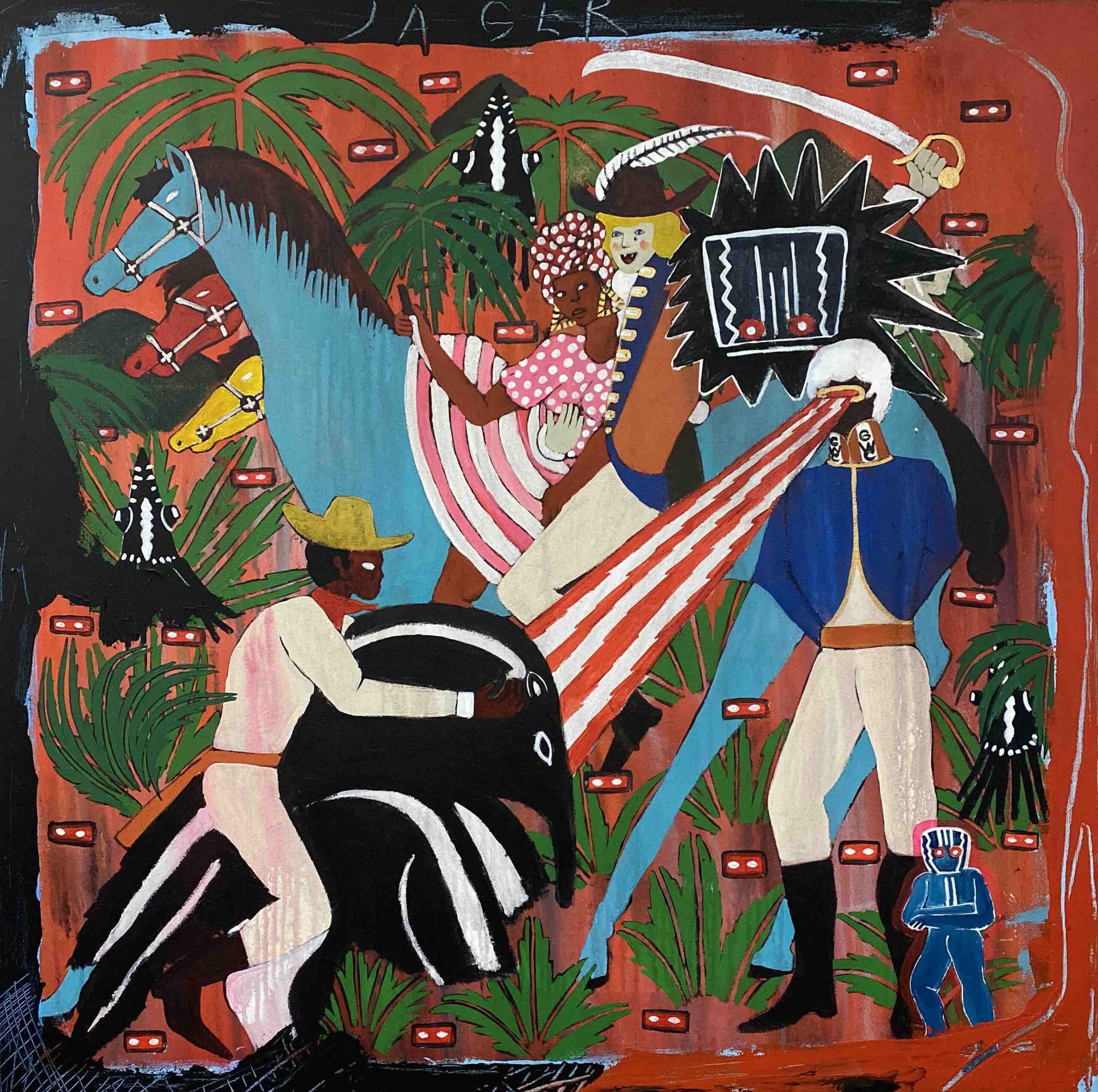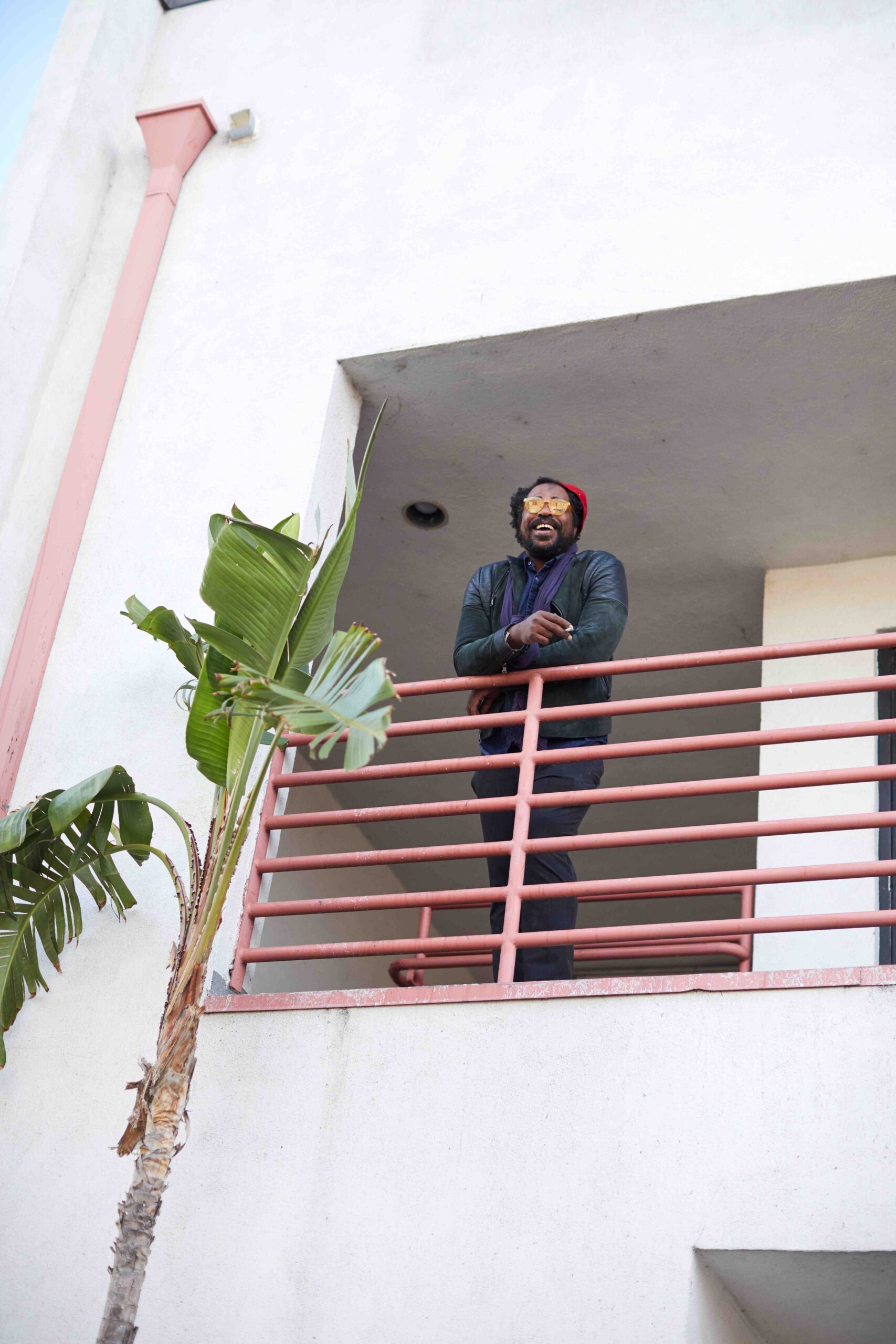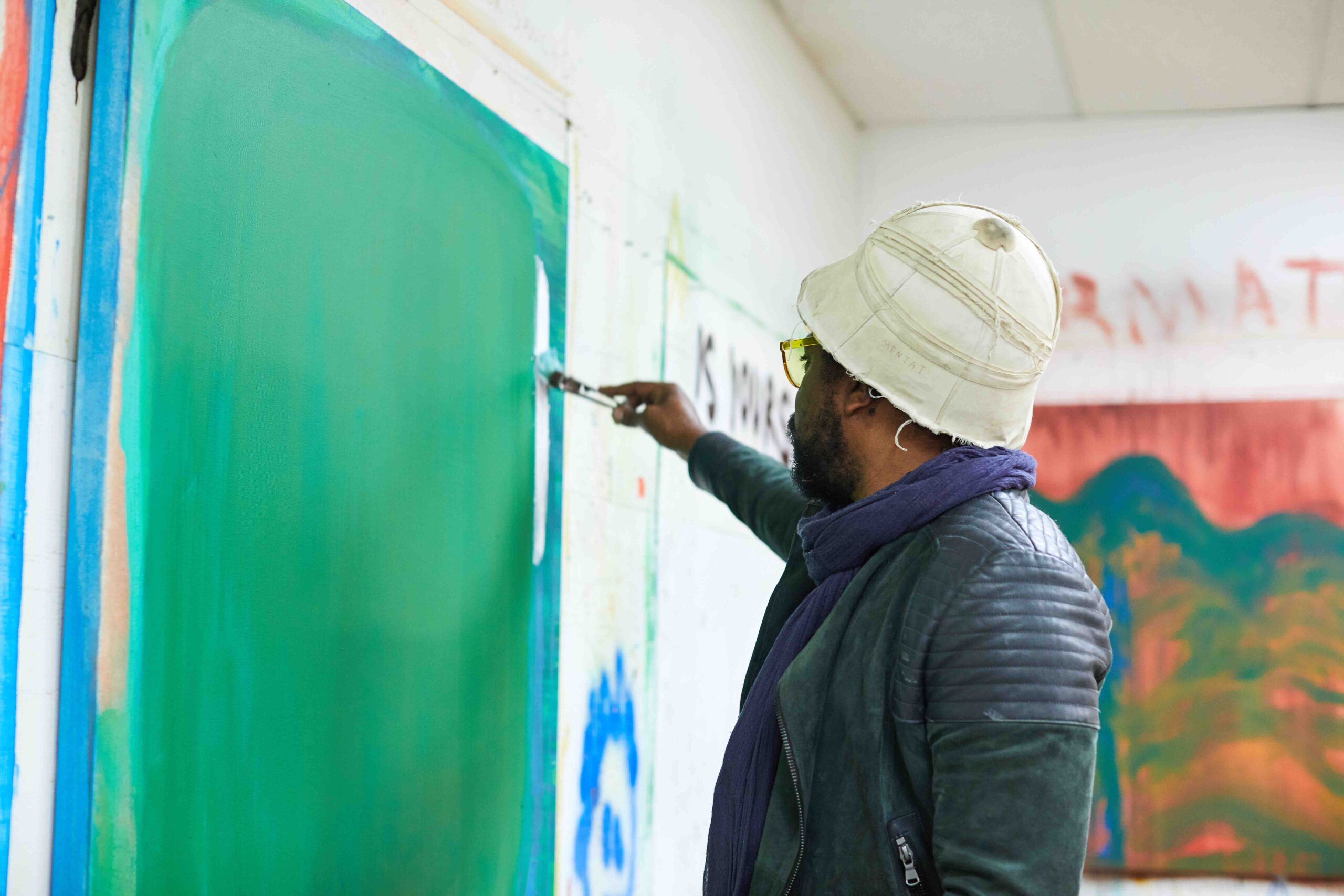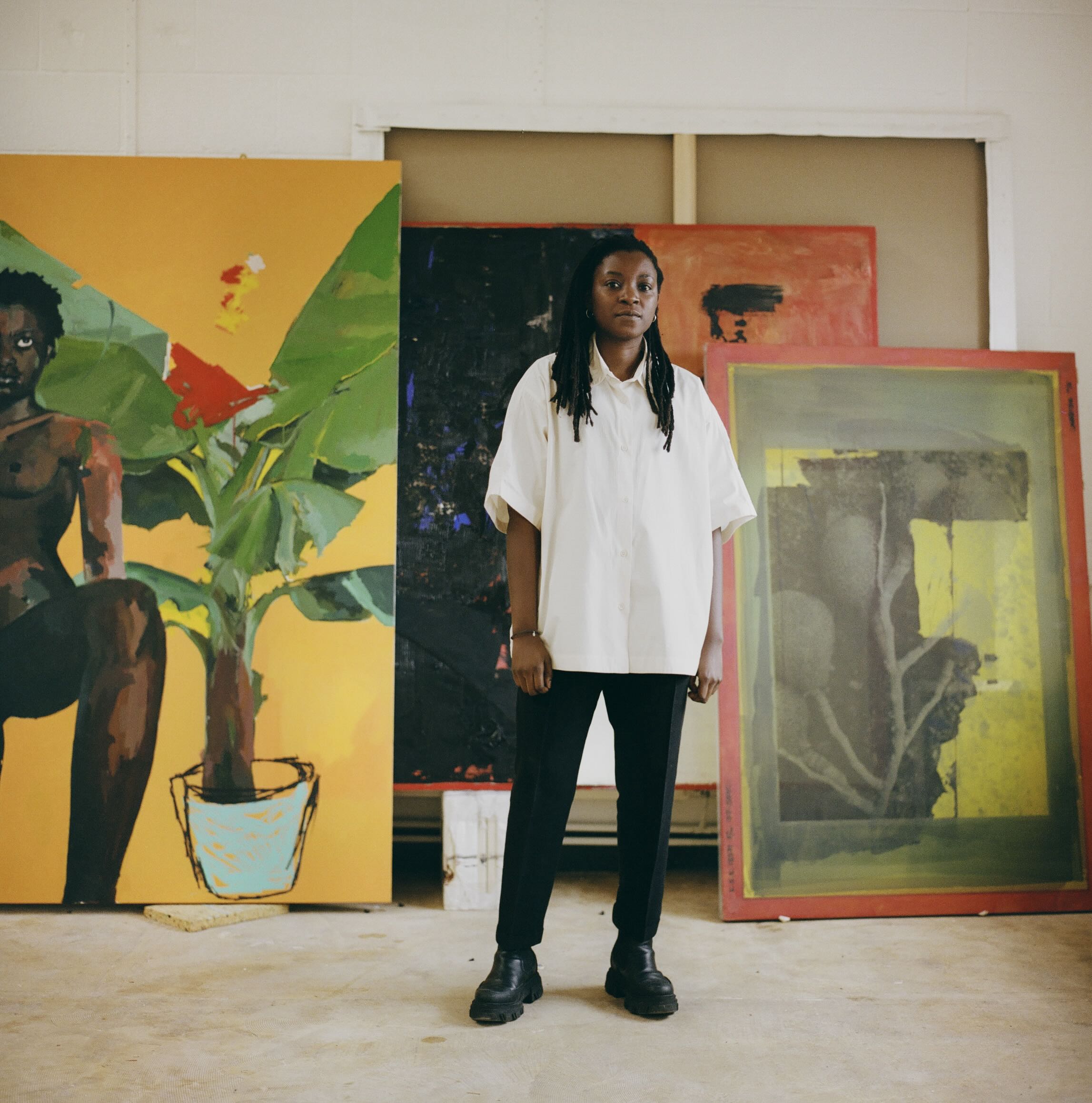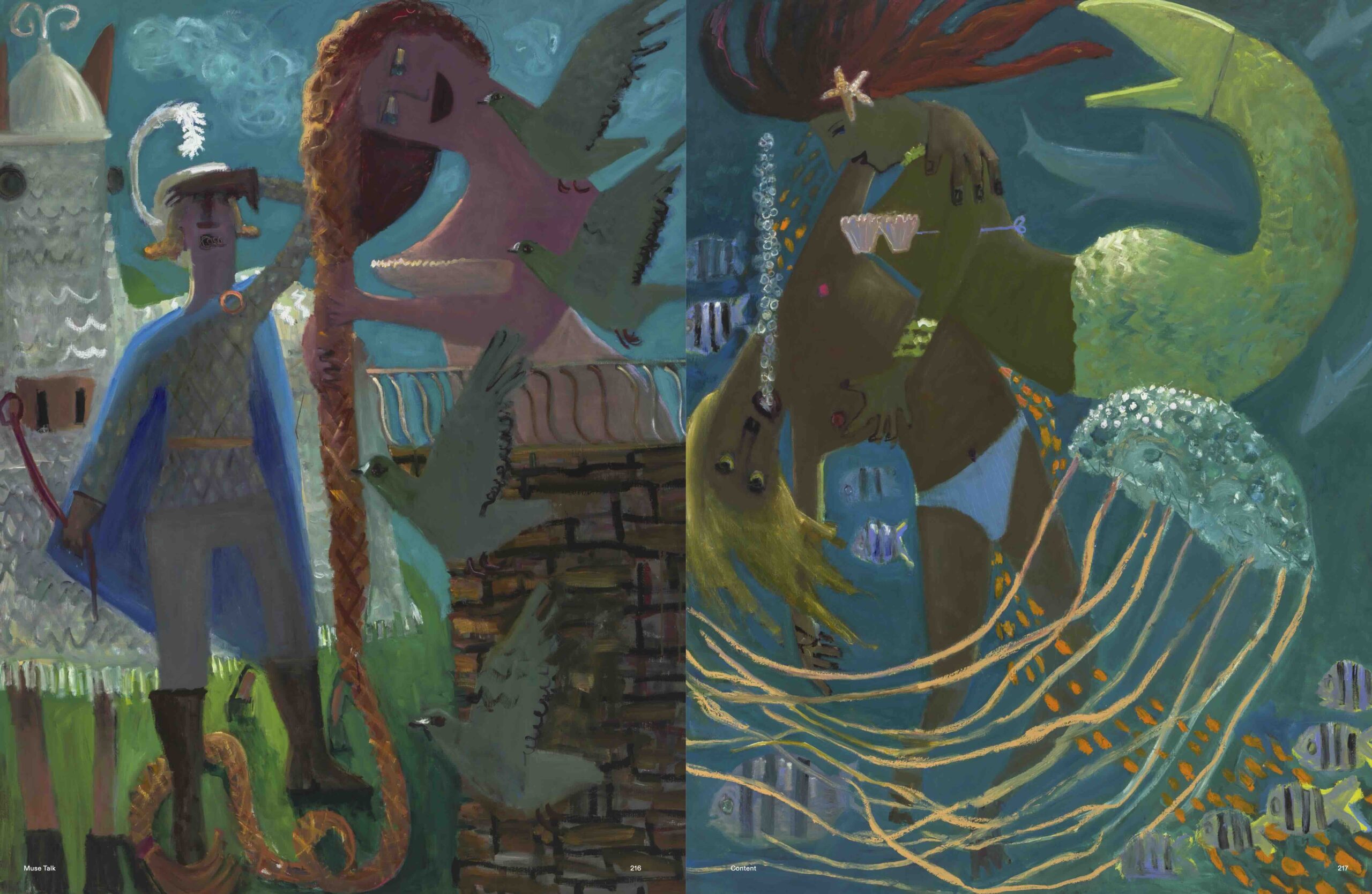UR I sort of life in the Third Stream.
BP Is that the opposite of the Mainstream?
UR It’s a jazz reference, but I think it works as a concept. In times of turmoil, I encourage people to diverge from the extremes. You have positive and negative energy. You have the Far Right and the Far Left.
BP Is this your defense against false polarities? Like if there’s the living and the dead, then what about the undead?
UR I would argue that the undead is the unconscious amongst the living. The people who will destroy the machine are the people who live in the machine and will destroy it from within. The forces in opposition have a vested interest in the system continuing, however Draconian. They don’t want the paradigm to change. Capitalism isn’t really the problem, it’s what people do with the wealth that’s acquired. Bartering, and acquiring wealth is an innate human tendency. If you’re growing corn and I’m a herdsman, we will always want to trade for what the other person is producing. It’s all really just another system. You don’t have to participate.
BP You mention an alternate path that feels related to your paintings in that you often depict a fictionalized version of history, events that never occurred. Your work reminds me of The Handmaid’s Tale or even Once Upon A Time in Hollywood where we see narratives that could have occurred but failed to materialize for whatever reason.
UR I try to make works that can exist on multiple levels. There’s the painting on face value which is often a black protagonist pitted against some colonial antagonist and that’s one initial read. But if you dig a little deeper, I reveal the duplicitous nature of human beings where you see a different black protagonist actively helping the white antagonist oppress the other black protagonist. Then in another passage of the painting, you might see someone sabotaging all three. It’s a messy business: civilization. And I think that can make my work hard to swallow. But it also makes it more interesting. I never wanted to make a one-dimensional object, something that gives the viewer peace of mind like a landscape painting or a Whistler. There’s a place for that, sure, but it’s not what I do. I want people to see the world for what it is.
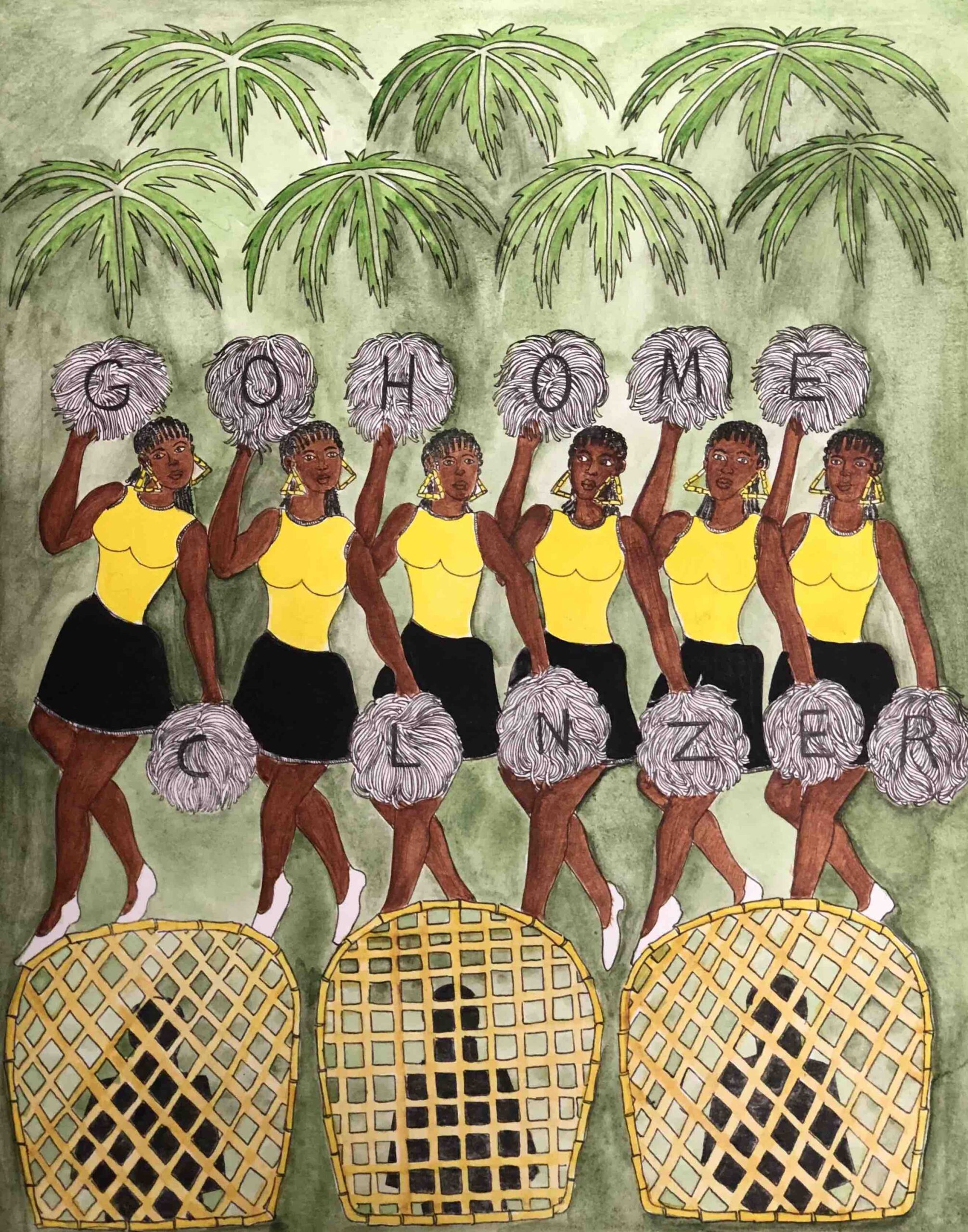
BP So why don’t you ever tackle contemporary society as a subject matter?
UR The contemporary is merely an extension of the past, maybe with the exception of electronics, interpersonal dynamics haven’t fundamentally changed since we learned to farm or Prometheus came down from the heavens and gave us fire. Whatever myth or religion you subscribe to the human story is always the same. Colonialism or what happened on Capitol Hill on January 6th isn’t all that distant. It’s who we are. What’s interesting about the Modern Age is how technology has eclipsed our capacity for the atrocities we commit, say, with drone strikes or other advanced weapon systems.
BP Do you employ humor in your paintings because the depravity would be too depressing otherwise?
UR Historically the only person who could make fun of the king without getting his head chopped off was the jester. So in a way, I’m playing that part. I think it can be a particularly tricky role for black Americans. Look at Dave Chapelle. He says some pretty weighty shit but through the lens of comedy which makes the truth more palatable. Chris Rock and Richard Pryor did that, too. Jesters are very in tune. They see the politics of the court and the machinations of the people in the streets. In my early teens, I even got into Goth for a minute. You know, all black clothes and industrial music.
BP Wait, you were a Goth like you listened to The Smiths and moped around all sad?
UR Yeah, you don’t see a lot of black Goths. I got my ass beat a couple of times in Chicago.
BP And for almost a decade you were a performance artist?
UR No, I was a rapper, straight-up MC. I didn’t even care about the art world. I started in like 1992. I released several albums. I was supposed to go on tour with Little Brother in 1999, but I was having these panic attacks so I never went. Another reason why I’m not one to throw people overboard so quickly is that you never know what kind of mental health issues someone is dealing with. And social media makes it all the more unforgiving.
BP What was your music like?
UR Hi-Fidel is my rap name. It was that Boom Bap 90s shit. One time I was shopping in Tokyo at this record store in Shibuya and a guy had his list of favorite MCs and I was on the list! It was so weird. I know it’s cliche or pretentious, but as a rapper, I was way more popular abroad than here in America.
BP You speak almost fluent Japanese. Isn’t that kind or rare for a black dude from Chicago? I mean, I don’t want to “other” you, just that I was so impressed.
UR That’s why it seems to be an anomaly, but for myself, I never accepted defeat if I put my mind to something. I think a lot of people fail because they’re too quick to accept defeat. You tell me I can’t do some shit, I do it.
BP Has Japanese culture influenced your art?
UR There’s the philosophy of A-un which I really love. If you’ve visited a Japanese temple maybe you’ve seen the figure of a lion with his mouth open and another depiction with his mouth closed. There’s a time to speak and a time to be silent. It’s very Buddhist and prophetic in its simplicity. I also love the whole “Death before Dishonor” code some Japanese live by. I know it sounds like some shitty 80s movie, but you have to admire that level of integrity, to be that passionate about your beliefs. Can you imagine if Americans lived by that philosophy? Hopefully, this interview will not be a call to arms, for violent nihilists.
BP Can you tell me about your paintings at The Hammer Museum right now in the exhibition Made in L.A.? There’s one piece called The Battle of Malibu. When I heard the title I imagined rich people under siege outside of Nobu.
UR The Battle of Malibu never happened, of course, but the Chumash people – who were indigenous to that area of California – made these boats called Tomol which were real ocean-going vessels. They were basically big ass canoes and they would travel from here to Catalina to the Santa Barbara Islands, up and down the coast. One of their settlements was in Malibu.
BP So who is fighting in your Battle of Malibu?
UR I have the Chumash coming through on their Tomol boats, but retro-fitted with cannons and they’re taking out some Spanish galleons on the mainland. There are few guys on surfboards, too, which I know is technically Polynesian, but it’s not inconceivable that the Chumash might have encountered them at some point. Also, it’s Malibu so why not have people surfing? From a Western mindset there’s this implicit narrative propagated that if it wasn’t for European settlers, indigenous people would have never accomplished anything which is patently untrue. And even if we were all still living in huts, I can’t say the industry has brought a lot of joy and healing to the earth. I like to create these what-if scenarios. I’ve spent the last five years dealing with the American West. Lots of changes in the progression of history, but the crux of “our perceived narrative” doesn’t change much.
BP How did you foster such a passion for history?
UR I remember as a kid winning awards for spelling bees and geographic bees. I was a very adept student. People would always say, “Oh, Umar, you are really smart.” And I’d wonder if they were complimenting me or actually saying, “Umar, you really smart for a black kid.” A small part of you always wonders. And then as a black American, I have no real history beyond my family’s time in The United States. I don’t know where my ancestors came from in Africa exactly. In most African American families, there is always mention of some white rapist or actual Native American lineage. So, as far as my knowledge my history starts in this country. It’s a blessing and a curse. Let’s start with the bad news first. It’s a curse because I don’t know the particular tribe I belong to, but a blessing because I kind of get to choose now. And recreate myself into some kind of super-being.
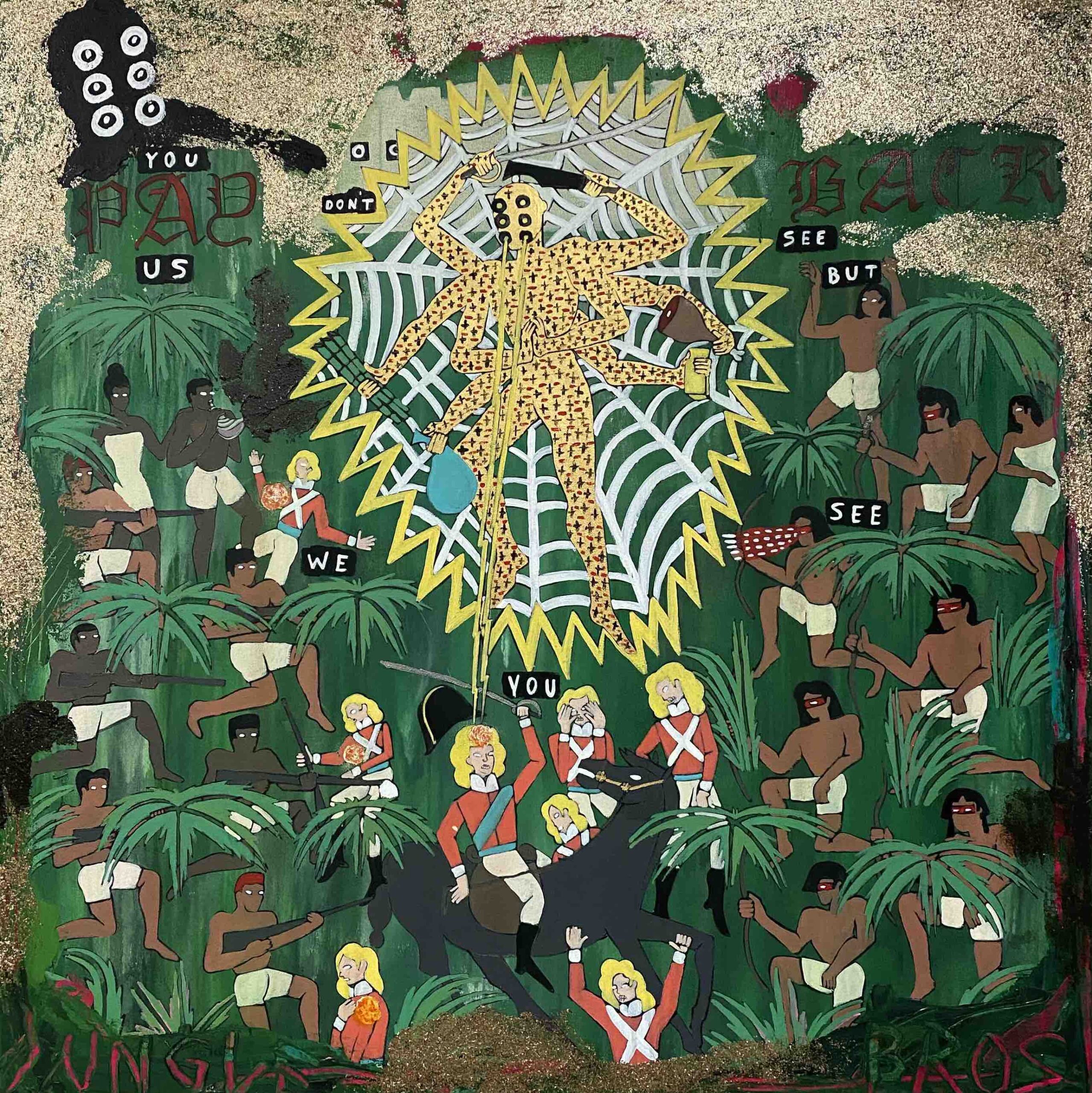
I was a very adept student. People would always say, “Oh, Umar, you are really smart.” And I’d wonder if they were complimenting me or actually saying, “Umar, you really smart for a black kid.” A small part of you always wonders.
BP You also have a proclivity for attire whether that’s a bespoke cape or a very intricate animal bone headdress.
UR I’m taking a page from the Neolithic period. There was no real civilization back when we were hunters and gathers. You might be walking across the prairie and trip over some dope elk’s skull and decide to shape it into a helmet to head-butt your enemy. There’s that primal essence in all of us.
BP But then the capes you make feel like some James Brown shit he would wear to perform.
UR Yeah, but it’s also very regal. Do you ever see that David painting of Napoleon? He’s wearing some floor-length snow leopard cape, beautifully embroidered. That’s what I’m saying. Napoleon fascinates me even though he was a terrible human being. He wanted to be the new Caesar.
BP You also have new work up at The Huntington Library as part of the same Made in L.A. exhibition?
UR I wanted to talk about the Afro-Mexican presence in Los Angeles when it was first settled. Nobody that had any money came here. It might as well have been Australia. Not the most desirable folks, which is what every empire does with a new outpost. That’s the crux of it. So then I decided to write “The World Is Yours,” only in Spanish, at the top of the painting. It’s a reference from Scarface which I thought was a funny nod to assimilation in America. The scene below the text is about the burning of The Mission in San Gabriel. There was a failed revolt there lead by the Tongva in 1785 against the Spanish missionaries. I imagined in my painting what if the indigenous people had prevailed! So we see a Spanish captain badly injured in the fighting being cradled by his black aide-de-camp who’s crying over his master kind of a Stockholm syndrome situation – while the Tongva stands around laughing at him for even caring about his dying oppressor. I mean, it’s a lot to digest.
BP I saw in your studio a swath of cowhide where you painted on the reverse side a scene that almost reads like a cave painting.
UR When I first moved to Los Angeles I used to make paintings on Trader Joe’s bags I glued together because I always liked the feel of those materials. I liked the rawness of it, the imperfection of the skin. So many celebrated artists now are just making products.
BP Someone like David Hammons is making products or is he trying to skirt around such pitfalls?
UR David Hammons really rejects all the notions of what art can or should be. That’s a rarity. I met him a few years back. It was arranged for me to hand out some Black Lives Matter buttons he’d made. Now I’m not one for slogans usually, because they tend to cheapen the cause. You can’t choose one thing without choosing the other. It’s all related. David Hammons is a genius though. He had his moment in the 1970s, but he didn’t give a fuck about the success. He’s another person who lives in the continuum. He doesn’t live in the same world we inhabit. Hammons knows his worth, not to be confused with Hauser & Wirth. Sorry, bad joke. There is no “i” in worth!
